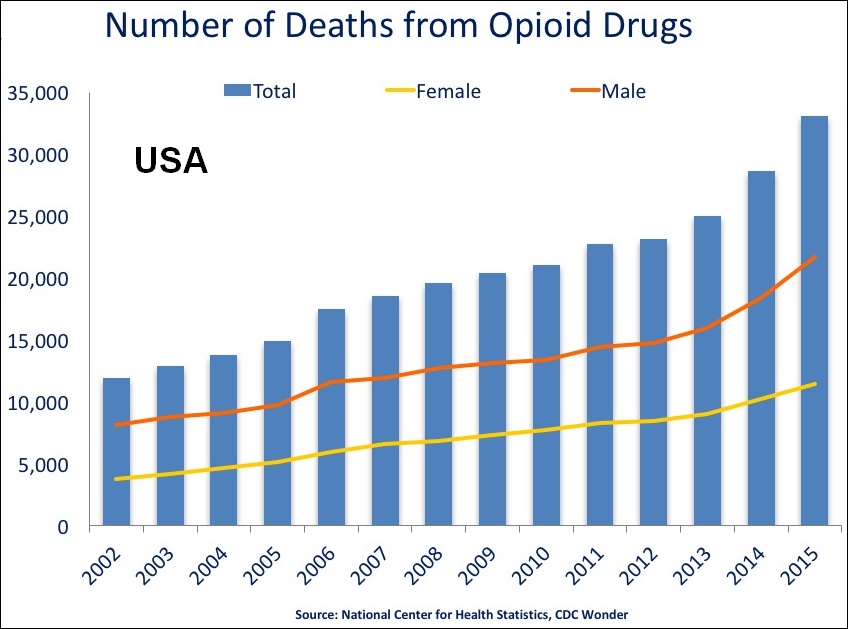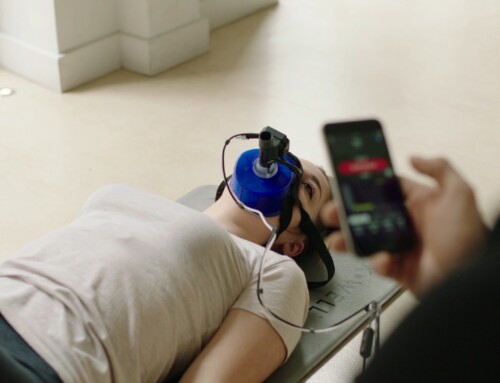The High Risk of Addiction to Opioids
Opioids are a class of powerful drugs used primarily as a treatment for pain and provide relief in the most excruciating of cases. Morphine, codeine, heroine, fentanyl, oxycodone (Oxycontin, Percocet) and hydrocodone (Vicodin) are all classified as opioids. The United States loses approximately one hundred lives a day as a consequence of the current opioid epidemic–addiction and abuse of prescription painkillers. If projections prove correct, another half a million more casualties may be on the way over the next ten years. Opioid overdose now ranks as the number one killer for Americans younger than 50 years old.
Addiction to drugs, alcohol, food, work, or other activity or substance, effectively blocks intelligence and suppresses healing abilities. Through these behaviors we choose to rely on the demands of addiction to dictate our lives, rather than taking responsibility to conduct ourselves in a healthy, life-affirming way.
Acupuncture for Treatment and Recovery from Opioid Addition
In cases where an opioid addict undergoes detoxification, withdrawal symptoms often make the process a terribly difficult experience. Signs and symptoms associated with withdrawal from opioids include: pain, intense emotional anguish, diarrhea, nausea, vomiting, hypertension, tachycardia and seizures.
Treatment options for rehabilitation generally include a gradual reduction from the drug. Special drugs such as methadone and buprenorphine can help assuage withdrawal symptoms and reduce cravings. These drugs do not produce euphoric effects and have a lower risk of addiction. Acupuncture and Oriental medicine help cleanse and re-balance your body and mind to manage cravings and overcome a variety of addictions, and can help manage cravings.
Several approaches are used when treating addictions, starting with therapies that help cleanse and balance. Sometimes a vague, uneasy sensation takes over after or during the process of releasing an addiction. Perhaps for the workaholic patient, it is strange and alarming to experience leisure time. Addicts require fortitude to find replacements for the dependence on substances or addictive behaviors. This is why willpower, or zhi, needs treatment to provide support and determination to discover the power within oneself–a universal necessity for overcoming any addiction.
Deep breathing with visualization can also strengthen willpower and be used as a tool to curb hunger and cravings. Most patients report a marked decline in appetite and cravings with acupuncture treatment alone, but special herbs, healing foods, and exercises can definitely enhance the efficacy of the treatments. Everyone experiences addiction in different ways with varying symptoms, and treatment is adjusted to the individual needs of the person seeking treatment. Some respond better to a sudden, jarring change in habits, whereas others may require a slower process to adjust to the changes that must be made.
Acupuncture and Oriental Medicine for Opioid Dependence
Acupuncture and Oriental Medicine treat opioid addiction in a holistic fashion. A great start to assisting patients during the rehabilitation process is the utilization of a simple and effective ear acupuncture protocol. The treatment consists of ten acupuncture needles applied to five points on each ear. After needle insertion, all a patient needs to do is sit quietly in a cozy chair for at least 20 minutes, up to one hour. The selection of ear points includes lung, shen men, autonomic point, liver and kidney. The lung point helps maintain an even, steady breathing pattern. This helps keep emotions such as grief and sadness from becoming an overwhelming burden. Additionally, it supports the respiratory and cardiovascular system. It is particularly useful for addictions related to smoking.
Shen men addresses the stress, anxiety, anguish and depression associated with opioid withdrawal. It also reduces the physical pain which may occur during the process. The autonomic point works on the nervous system by balancing the parasympathetic and sympathetic system. The former calms bodily functions, while the latter speeds things up. The liver point aids the liver organ in cleansing the blood and removing toxic material. The kidney point is similar in function, as the kidney also plays a major role in ridding the body of harmful substances. A key difference between the points is the emotions they treat. The liver point works to reduce anger and frustration, while the kidney point helps to alleviate fear.
The NADA Protocol and Addiction
This particular auricular therapy is known as the NADA protocol. Developed in the 1970’s due to the efforts of Dr. Michael Smith at the Lincoln Memorial Hospital in New York, NADA stands for the National Acupuncture Detoxification Association. Dr. Smith created the NADA protocol as a treatment to help many suffering with heroin addiction in the local community.
The success of the NADA program helped recovering addicts lower their chances of recidivism and increase their chances of entering society as healthy, drug-free individuals. In 1996, the World Health Organization declared acupuncture as a viable method to assist patients in withdrawing from chemical dependencies. Three reasons why acupuncture receives such high accolades for its success in treating opioid addictions, and other substances as well, is due to its simplicity, cost-effectiveness and absence of negative side effects. It is also safe for patients of virtually any age group, and in most cases, for pregnant women.
Sometimes it is not only the patients who need treatment, but family members and loved ones who also suffer as their loved ones go through the withdrawal process. Application of the NADA protocol is safe for them and may help in dealing with their heavy emotions. It is support for the support team, so to speak. With an estimated 2.5 million people dealing with opioid addiction, safe and effective methods are needed more than ever to curb this national public health crisis. Whether the addiction is from doctor prescribed opiates, or illegal street drugs like heroine, acupuncture and Oriental medicine provides treatment.
Acupuncture’s Role in Solving the Opioid Epidemic
A recent 2017 White Paper “Acupuncture’s Role in Solving the Opioid Epidemic: Evidence, Cost-Effectiveness, and Care Availability for Acupuncture as a Primary, Non-Pharmacologic Method for Pain Relief and Management” investigated acupuncture as part of a solution to the current opioid epidemic in the US.
The paper provides evidence that acupuncture is effective for managing pain. This applies to pain from numerous medical conditions including migraine headache, low back pain, neck pain, nausea resulting from chemotherapy and others. The author referenced several scientific studies in order to reach this conclusion.
There are two other important reasons to utilize acupuncture. One is the relatively low cost of the treatment, which can save money for patients and insurers. The other reason is the risk of negative side effects occurring is minimal, especially when compared with the adverse events associated with some medical procedures and pharmaceutical drugs. Acupuncture is a safe procedure when performed by a qualified practitioner.
The paper concludes that acupuncture is appropriate and useful as an adjunct therapy to treat and rehabilitate those contending with an opioid addiction. The FDA recently recommended in May of 2017 that non-pharmacologic options be explored before doctors prescribe extended-release and long-acting opioids. Starting Jan. 1, 2018, hospitals will also provide non-pharmacologic options to help patients manage their pain. This mandate was set by the Joint Commission, a prominent non-profit organization which certifies health care organizations in the United States. Acupuncture meets the requirements necessary to satisfy this mandate.
In addition to getting treatment, here are seven lifestyle changes you can make to help curb cravings, improve your overall well-being, and assist in your recovery.
- Exercise more. Exercise can reduce your stress and help you relax.
- Get plenty of fresh fruit and vegetable juices to neutralize and clear the blood and to fortify blood sugar.
- Carrots, celery, leafy green salads, and citrus fruits promote body alkalinity and can decrease cravings.
- Avoid junk food, sugar, and coffee. They can upset blood sugar levels and increase blood acidity, which can aggravate withdrawal symptoms.
- Lobelia tea or green tea sipped daily during the detox period keeps tissues flooded with elements that discourage cravings. Lobelia’s traditional use is to rid the body of a strong toxin such as snake venom.
- Drink water. Research shows that dryness causes cravings. Sip water frequently throughout the day.
- Practice deep breathing exercises to increase body oxygen and keep calm.
FDA Recommends Acupuncture for Pain Management
The Federal Drug Administration (FDA) declared acupuncture as one of the non-pharmacologic therapies recommended for the treatment of pain in “FDA Education Blueprint for Health Care Providers Involved in the Management or Support of Patients with Pain,” dated May 2017.
The paper lists acupuncture as one of the numerous ways to treat pain. This is especially significant given the current opioid addiction epidemic in the United States. In the section called Opioid Analgesics, attention is drawn to the fact that health care providers should know the depth of the epidemic. We now realize the source of a lot of the opioid addiction is from drugs that were prescribed by doctors for individuals contending with pain.
Acupuncture can help manage certain kinds of pain, such as musculoskeletal and chronic pain. Bones, muscles, tendons, ligaments, joints and connective tissue comprise the musculoskeletal system. It is what supports and animates the body. Chronic pain lasts for more than 12 weeks, often persisting for months or years after the initial onset.
The FDA recommends health care providers know about the existence of, and when to apply non-pharmacologic therapies, such as acupuncture. Using this knowledge, a multidisciplinary plan to safely and effectively deal with physical pain should include acupuncture.
Source:https://www.fda.gov/downloads/Drugs/NewsEvents/UCM557071.pdf
Call today to schedule with Danielle and see how acupuncture and Oriental medicine can improve your quality of life, 971-236-7610, option 1.
Content sourced from AcuFinder.




